Pentax K-1 Pixel Shift Technology Overview
Pentax has always had a place in my photographic heart. My first medium format camera was the original Pentax 645 film camera, the predecessor to the well regarded Pentax 645Z. The 645 series of cameras handle like full frame DSLRs in the field, but deliver medium format image quality. Pentax has a long history of creating innovative cameras by photographers, for photographers. The engineering department within Pentax has always seemed less restricted by marketing constraints than many other companies. For instance, while most camera companies force their proprietary RAW format on their customers, Pentax provides the option to record RAW data in the open DNG format. This frees the photographer from dependence on the company’s RAW processing algorithms and makes archiving data more secure. But Pentax, now subsidiary of Ricoh, has also always had more limited means than the bigger players in the industry. So they’ve had to innovate in order to make the most of their limited resources.
Enter the recently released Pentax K-1, the company’s first full frame DSLR. The K-1 uses the older Sony 36MP full frame sensor, but to new effect. By exploiting the camera’s in body image stabilization, Pentax has added pixel shift technology to the K-1. The technology essentially takes four consecutive exposures while moving the sensor one pixel width in a four directional grid. The four exposures are combined into one image where each pixel has been sample by a red, a blue and two green pixel sites. This eliminates the need for interpolating the Bayer grid pattern on the sensor, theoretically increasing the image resolution by a factor of 2, and cutting image noise in half. Early tests with the K-1 pixel shift technology suggest this is more than hyperbole. Both DPReview and Imaging Resource have published first test images confirming substantial image quality improvements from the technology. Pixel shift images from the K-1 not only appear to out resolve the Nikon D810, the Canon 5DS R, and the Sony A7RII, but also compare favorably with the Phase One IQ180, an 80MP medium format camera back that goes for a cool $35K. The Pentax K-1 introductory price is $1800.
Perhaps an equally important result of the pixel shift technology is noise reduction. By essentially stacking four frames of the same image, random noise is averaged out while actual image detail remains. This is a common technique used for processing astrophotographs. See my article on Astrophotography Image Processing for a more detailed explanation. Noise reduction through pixel shift technology is going to have the most apparent benefit when used at higher ISOs in low lighting situations, such as night shots. Lowering noise also increases dynamic range by allowing shadows to be raised more before noise becomes objectionable. By leveraging the in body image stabilization of the K-1, Pentax has added the ability to increase the camera’s theoretical resolution two fold, also doubling the dynamic range by decreasing noise by one half. It would seem that pixel shift technology would make the K-1 one of the best options currently available for landscape photography.
Unfortunately, there is still no free lunch. One significant drawback to using pixel shift technology is that it doesn’t work well with moving subjects. Since four exposures are required to created the combined image, there is time for the subject to move between exposures. If the details of an image move slightly between exposures, the resulting image will have motion artifacts. Imagine a flowing waterfall or fluttering leaves and it’s easy to see that many landscapes are not static subjects. It should be noted that Silkypix, the RAW processor included with the K-1, can correct for some of the motion artifacts. So while pixel shift technology is a useful tool that adds to the Pentax’s abilities, it still has limitations for many types of photography.
Of course, the Pentax K-1 isn’t a one trick pony. It also uses the movable sensor for a tech called Astro Tracer. This moves the sensor to counter star rotation during night shots. Typically, the long exposures required for good images of starry skies result in star trails. By incorporating the camera’s built in GPS and electronic compass, the K-1 is able to calculate the rotation of the sky for a specific location and move the sensor to counter the rotation for long night exposures. Astro Tracer allows for night sky exposures up to 5 minutes without star trailing. This is dramatically longer than the 15-30 second night exposures normally possible with wide angle lenses. It is one more example of Pentax leveraging existing technology to create new features.
Despite some limitations, I think Pentax should be commended for once again thinking outside the box and bringing innovative and useful technologies to market. While they are not the first manufacturer to employ pixel shift technology to increase resolution, they are the first to do so in a full frame camera. They area also the first to use a movable sensor for astrophotography. Aside from the headline grabbing pixel shift technology, the camera also has 5-axis in body image stabilization, weather sealing, has an articulating screen, a built in GPS and compass, and DNG raw format. All these features will make the Pentax K-1 a formidable tool for nature photographers. The full list of camera specifications is below.
Pentax K-1 Specifications
| SENSOR | Primary color filter, CMOS, Size: 35.9 x 24.0mm, Effective pixels: 36.40 MP, Total pixels: 36.77 MP Recorded resolution photo: [35mm Full Frame] JPG: L (36M): 7360×4912, M (22M): 5760×3840, S (12M): 4224×2816, XS (2M): 1920×1280 RAW: (36M): 7360×4912 Recorded resolution photo: [APS-C size] JPG: L (15M): 4800×3200, M (12M): 4224×2816), S (8M): 3456×2304, XS (2M): 1920×1280 RAW: (15M): 4800×3200 Movie (resolution/FPS): Full HD (1920×1080) @ 60i/50i/30p/25p/24p, HD (1280×720) @ 60p/50p Quality levels: Best, Better, Good, RAW (14-bit) PEF, DNG, RAW + JPEG |
| LENS MOUNT | Type/construction: PENTAX KAF2 bayonet mount (AF coupler, lens info contacts, K-mount w/ power contacts). Usable lens series: KAF3, KAF2 (power zoom compatible), KAF, KA mount lens |
| FOCUS SYSTEM | Type: TTL: Phase-matching autofocus Focus Sensor: SAFOX 12, 33 point (25 cross type focus points in the center) Brightness Range: EV -3 to 18 (ISO100 @ normal temperature) AF mode: Single AF (AF.S), Continuous (AF, C) AF point selection: Spot, Select, Expanded Area (S, M, L), Zone select, Auto (33AF Points) AF assist light: dedicated LED AF assist light |
| VIEWFINDER | Type: Pentaprism finder Coverage (field of view): 100% Magnification: approx. 0.70X (50mm F1.4 at infinity) Eye relief length: approx. 20.6mm (from the view window), Approx 21.7 mm (from the center of lens) Focusing screen: Natural-Bright-Matte III focusing screen Diopter adjustment: approx. -3.5m to +1.2m-1 Viewfinder overlay: AF Points, Grid Display, Electronic Level, AF Frame, Spot Metering Frame, Crop |
| LCD MONITOR | Type: wide viewing angle TFT color LCD, Air-gapless glass, Flexible tilt Size: 3.2 inch (3:2 Aspect) Resolution: 1037K dots Adjustment: brightness, saturation and colors adjustable Outdoor View Setting: adjustable ±2 step |
| LIVE VIEW | Type: TTL method using image sensor Focusing mechanism: Contrast detection (Face Detection, Tracking, Multiple AF points, Select, Spot), Focus peaking : On/Off Display: field of view approx 100%, magnified view (up to 16x), grid display (4×4 grid, golden section, scale display, square 1, square 2, grid color: black/white), histogram, bright area warning, composition adjustment |
| BUILT-IN GPS | Satellites: GPS, QZSS, SBAS (WAAS/EGNOS/GAGAN/MSAS) Reception frequency: L1 1575.42MHz Recorded information: latitude, longitude, altitude, time (UTC), direction Geodesics: World Geodetic System (WGS84) GPS logging: KML format, logging interval 5/10/15/30 sec./1min., logging duration: 1 24hr (Up to 9 hrs at logging Interval 5 sec, up to 18 hrs. at logging interval 10 sec.) |
| EXTERNAL FLASH | Flash modes: auto flash discharge, auto flash + red-eye reduction, flash on, flash on + red-eye reduction, slow speed sync, slow-speed sync + red-eye, P-TTL, trailing curtain sync, contrast-control sync*, high-speed sync*, wireless sync *Contrast-control-sync and high-speed sync requires 2 or more dedicated external flashes Sync speed: 1/200 sec., flash exposure compensation: -2.0~+1.0 EV |
| STORAGE MEDIA | Internal memory: n/a Dual card slot: sequential use, save to both, separate RAW/JPG, image copy between slots possible Removable memory: SD, SDHC and SDXC memory card (conforms to USH-I standards) |
| INTERFACES | Connection port: USB 2.0 (Micro B), external power supply terminal, external cable switch terminal, X-sync socket, HDMI output terminal (Type D), stereo microphone input terminal, headphone terminal USB Connection: MSC/PTP |
| WIRELESS LAN | Standard: IEEE 802.11 b/g/n Security: authentication, WPA2, Encryption: AES |
| POWER SUPPLY | Battery type: rechargeable lithium-ion battery D-LI90 AC Adapter: AC adapter kit K-AC132 (optional) Battery life: number of recordable images: approx 760, playback time approx 390 min. * With a fully-recharged rechargeable lithium-ion battery, tested in compliance with CIPA standard. Actual results may vary depending on the shooting condition. |
| PHYSICAL SPECIFICATIONS | Body dimensions approx. 5.37” (W) x 4.33”(H) x 3.37”(D) (excluding protrusions) Body Weight: 32.6oz (body only), 35.6oz (with battery and 1x SD card) Construction material(s): magnesium alloy shell over metal chassis Weather resistant: yes (87 special sealing parts) Operating temperature: 14-104°F (-10 to 40°C) |
| LANGUAGE SUPPORT | English, French, German, Spanish, Portuguese, Italian, Dutch, Danish, Swedish, Finnish, Polish, Czech, Hungarian, Turkish, Greek, Russian |
| IMAGE STABILIZATION | Type: sensor-shift shake reduction (SRII), 5-axis electronic level function: displayed in VF/LCD (Horizontal and vertical) Horizon correction: SR on: correction up to 1˚, SR off: correction up to 2˚ |
| METERING SYSTEM | Type: TTL open aperture metering using 86K pixel RGB sensor, multi-segment, center weighted and spot metering Range: EV-3 to 20 (ISO100 at 50mm F1.4) Exposure Mode: Scene Analyze Auto, Program, Sensitivity Priority, Shutter Priority, Aperture Priority, Shutter & Aperture Priority, Manual, Bulb, Flash X-sync Speed, USER1, USER2, USER3, USER4, USER5 EV compensation: ±5EV (1/2EV steps or 1/3EV steps can be selected) AE lock: button type (timer type: two times the meter operating time set in custom setting); continuous as long as the shutter button is halfway pressed |
| ISO SENSITIVITY | ISO AUTO/100 to 204800 (EV steps can be set to 1EV, 1/2EV or 1/3EV) |
| WHITE BALANCE | AUTO WB, Multi Auto WB, Daylight, Shade, Cloudy, Fluorescent Light (D: Daylight Color, N: Daylight White, W: Cool White, L: Warm White), Tungsten Light, CTE, Manual WB (up to 3 settings), Color Temperature Configuration (up to 3 settings), copying the white balance setting of a captured image Fine Adjustment: Adjustable ±7 steps on A-B axis or G-M axis |
| SHUTTER | Electronically controlled vertical-run focal plane shutter (electronic w/ Pixel Shift Resolution) Shutter speed: auto: 1/8000 to 30 sec., manual: 1/8000 to 30 sec. (1/3 or 1/2EV steps), Bulb |
| CAPTURE MODES | Custom image: Auto Select, Bright, Natural, Portrait, Landscape, Vibrant, Radiant, Muted, Flat, Bleach Bypass, Reversal Film, Monochrome, Cross Processing Cross Process: Random, Preset 1-3, Favorite 1-3 Digital filter: Extract Color, Replace Color, Toy Camera, Retro, High Contrast, Shading, Invert Color, Unicolor Bold, Bold Monochrome Clarity: adjustable ±4 steps Skin tone: Type 1/Type 2 HDR: Auto, HDR1, HDR2, HDR3, Advanced HDR, Exposure bracket value adjustable, Automatic composition correction function Lens Correction: distortion correction, peripheral illumin. correction, lateral correction, aberration correction, diffraction correction D-RANGE compensation: highlight correction, shadow correction Composition adjust: ±1.5mm up, down, left or right (1mm when rotated); 1 degree of range |
| DRIVE MODES | Mode selection Still image: single frame, continuous (H, M, L), self-timer (12s, 2s, continuous), remote control (0s., 3s., continuous), bracketing (2, 3 or 5 frames), mirror-up (possible to use with remote ctrl), multi-exposure (possible to use with continuous, self-timer or remote ctrl), interval shooting, interval composite, interval movie record, star stream Movie: remote control *bracketing, interval shooting, interval composite, interval movie record and star stream are possible to use with self-timer/remote control. Continuous shooting (approximates) [35mmFull Frame] Max. 4.4 fps, JPEG ( L: ★★★ at Continuous H): up to 70 fr., RAW: up to. 17 fr. Max. 3.0 fps, JPEG L: ★★★ at Continuous M): up to 100 fr., RAW: up to 20 fr. Max. 0.7 fps, JPEG ( L: ★★★ at Continuous L): up to 100 fr., RAW: up to 100 fr. [APS-C size] Max. 6.5 fps, JPEG ( L: ★★★ at Continuous H): up to 100 fr., RAW: up to approx. 50 fr. Max. 3.0 fps, JPEG L: ★★★ at Continuous M): up to 100 fr., RAW: up to 70 fr. Max. 1.0 fps, JPEG ( L: ★★★ at Continuous L): up to 100 fr., RAW: up to 100 fr. *ISO100 Multi-exposure: composite mode (additive/average/bright) # of shots(2 to 2000 images) Interval shooting: [Interval shooting] interval: 2s. to 24h./ standby interval: 1sec. to 24hrs., number of images: 2 to 2000, start interval: now/self-timer/remote control/set time [Interval composite] interval: 2sec. to 24hrs./ standby interval: 1sec. to 24hrs., number of images: 2 to 2000, start interval: now/self-timer/remote control/set time, composite mode: additive/average/bright, save process: on/off [Interval movie] recorded pixels: 4K/FullHD/HD, file format: motion JPEG (AVI), interval:2sec. to 24hrs./standby interval: 1sec. to 24hrs., number of shots: 8 to 2000 images (8 to 500 images at 4K), start interval: now/self-timer/remote control/set time [Star stream] recorded pixels: 4K/FullHD/HD, file format: motion JPEG (AVI), interval:2sec. to 24hrs./ standby interval: 1sec. to 24hrs., number of shots: 8 to 2000 images (8 to 500 images at 4K), start interval: now/self-timer/remote control/set time, fade-out: off/low/medium/high |
| PLAYBACK MODES | Single frame, multi-image display (6,12, 20, 35, 80 segmentation), display magnification (up to 16, 100% display and quick magnification available), grid display (4×4 grid, golden section, scale display, square 1, square 2, grid color: black/white ), rotating, histogram (Y histogram, RGB histogram), bright area warning, auto image rotation, detailed information, copyright information (photographer, copyright holder), GPS information (latitude, longitude, altitude, coordinated universal time) , orientation, folder display, calendar filmstrip display, slide show |
| FILE FORMATS | Still: RAW (PEF, DNG), JPG (EXIF 2.30), DCF 2.0 compliant Movie: MPEG-4 AVC/H.264 (MOV) – JPEG(AVI) for internal movie record |
| CUSTOM FUNCTIONS | Functions available: 26 |
| COMPUTER SYSTEM REQUIREMENTS | For device connectivity. Bundled software requirements may vary. Windows: Windows 10/Windows 8.1 (32 bit/64 bit) / Windows 8 (32 bit/64 bit) / Windows 7 (32 bit/64 bit) / Windows Vista (32 bit/64bit). Mac: Mac OS X 10.10 / 10.9 / 10.8 / 10.7 |
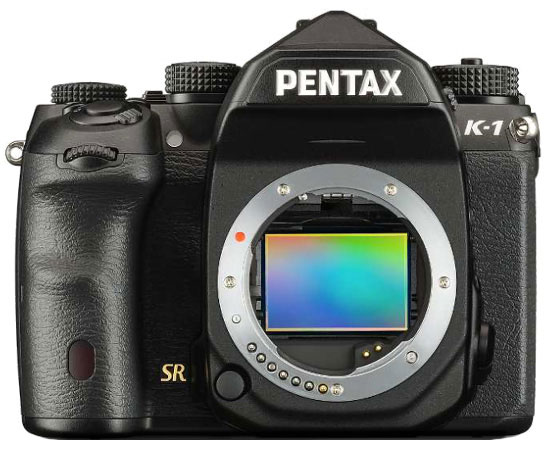
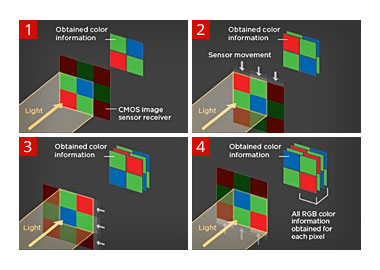
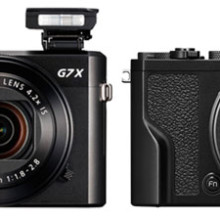
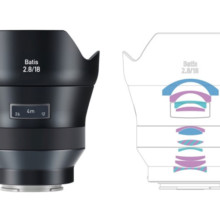
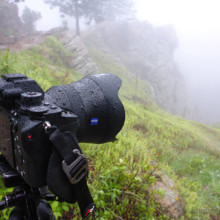
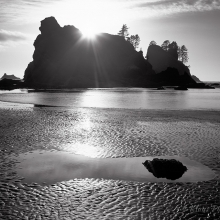
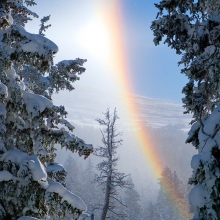
Leave A Comment